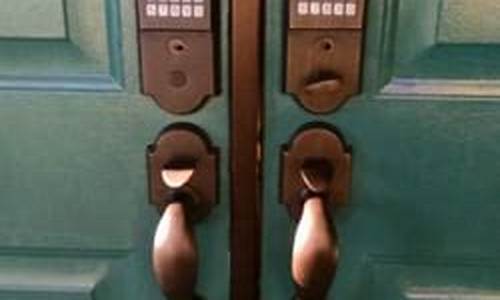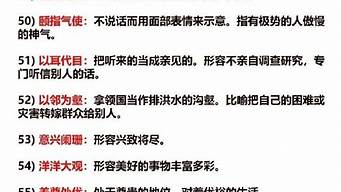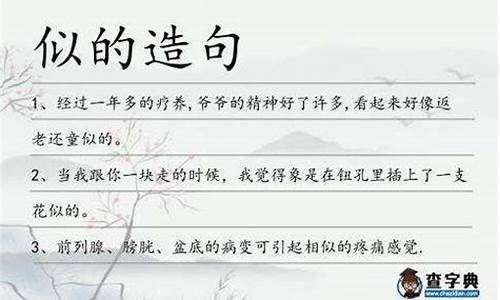locksmithing_locksmith
1.辐射4-新手开局建议
2.英语Smith是什么职业?
3.机械专业英语的机械专业英语词汇
4.帮忙翻译一些常用的英语标志?急!!!
5.电脑设置bios启动密码忘记了怎么办
6.车,铣,刨,磨,钳,锻,铸的英文翻译?

---------------
所有任务一览:&
---------------
---------战场-----------------------------------------------------
第一个厕所的士官任务:
1.找到信号塔在西面
2.炸毁信号塔注意时间即可,注意引爆的时候不要动,不然会炸到自己
3.打败兽人指挥官位置在信号塔更西边的地方
4.theplan将计划传递给leBeauxKuckelle的指挥官得到这个任务以后,在第二个厕所会有另一个士官在等你
以上均属于主线
navyduck海军码头厕所
没帽子的士官任务:
1.得到一顶新头盔到达城镇后,在商店买到那顶可爱的头盔即可。
有帽子的士官任务:
Megabomb(炸弹):用火箭筒炸毁北边大桥上的大炸弹
--------leBeauxKuckelle城镇------------------------------------------------
完成Megabomb任务,来到城镇。
TownMedic(小镇医生):
Mercy(怜悯):从sanctuary(避难所)得到5个医疗包,这个任务拖的比较长了。如果任务都做的话30%左右的时候吧。
lucy任务:
LostFather(我把老爸丢了):他的老爸在很后面的黑暗森林才会遇到。30%
RobotScans(给机器人做妇检):Lucy认为可以从Mark-7身上得到泰科-7的弱点,所以我要给Mark-7做妇检!马克7在游戏的第二部分,沃顿的工场地下室里才出场,50%。
DestroytheTricore-7毁掉泰科7:把得到的红色水晶放在泰科7(Tricore-7)的旁边,消灭不断靠近的6型机器人即可对它产生伤害,这个任务出奇的容易,只要能挨住泰科7一下,就行,一直在泰科7面前转圈它就打不到你,然后注意消灭那些靠近的小型维修机器人。
RadioHost(主播):
vacuumTubes(收集真空盒):打机器人,得到10个真空盒儿。机器人在镇子的左边,数量比较多,用得到的手榴弹一下能炸好几个。
Photojournalism(我的摄影作品):在地图北边,被毁掉的城市(DestroyedCity)进行照相,地上捡到相片的时候装备相机使用就行了。
OnTheAir(修理信号塔):五座。注意有一座在农场的左边,制作组算准了你躲避幽灵指挥官没空发觉那边还有块空地。
HeartofDarkness(黑暗的中心):找到在丛林里的Scoop,他在Jungle地图的下方。
LockSmith(锁匠):
北边有个箱子,对暗号把它打开。
famerBlizban农场主布里斯班:
RampagingRobots(混乱的机器人):布里斯班希望你能够消灭打扰小狗(zigzag)的混乱机器人,得到10个机器人头。在北边。8级的zap是不会主动攻击你的。
peskySkletons(讨厌的骷髅):消灭骷髅得到50根骨头,完成这个任务要先去北边把桥闸放下。注意指挥官打不死,但不用怕。只要幽灵指挥官不近身攻击你,伤害就不高。
thighboneDelivery(送肋骨):送信任务,把骨头交给女巫Hanna,女巫在黑暗森林/避难所地图,翻过山脉才能到达。30%。
UndeadCommanders(不死指挥官):用给你的剑把5个不死指挥官KO。
将军任务:
mapoutthenothpole:找到北极找到船以后的任务了,请搜索,在主线。
chunkofgold:请搜索,在主线。
GunParts:请搜索,在主线。
将军助理任务:
marchingOrders(进军命令):给海军长官送信,海军长官出现在开始的码头。
FortheWarEffort(为了战争):收集50个金属零件,打机器人掉。
武器屋老板任务:
packageforCaptainTaint(给泰安特船长的包裹):给Taint送包裹,主线的船长,从他那里得到船
packageforFamerBlizbanm(给布里斯本的包裹):给Blizbane送包裹。
-------Lebeaux附近的其他任务------------------------------------------------
Ima艾玛厕所(农夫):
听农夫夫妇吵架以后,他们会分开,就可以接任务了。
ManureMatters(粪肥):消灭丛林野驴,得到他们的粪便。丛林野驴在海盗村右边的森林里
DinoDroppings(恐龙的排泄物):消灭Tyrannoraptor的得到恐龙的便便,这头恐龙在游戏的第二部分,沙漠,DinosaurGraveryard上
FrozenTreats(霜冻肥料):从霜巨人(FrostGiantIsland)的岛上得到两个霜冻肥料,要在游戏的第三部分,海东北的皮普岛上杀死大型冰皮普得到。
farmeoutside厕所(士官):
shoottheRecruits(向敌人射击!):消灭Pips(皮普)得到21颗牙齿。要穿过丛林,翻越山脉才能完成这个任务。绿皮肤的皮普怕火,用火焰火箭筒消灭,后面的皮普用自然系的。注意躲在皮普指挥官后面有两个拿火箭筒的兽人,消灭掉落火箭筒。。
Jungle丛林厕所(Scoop在丛林南边的海滩):
Scoop'sSecretStory:送信给广播员RadioHost在镇子里
-------海军长官和黑塔研究员--------------------------
NavyCaptain(海军长官任务):
OilFortheShip:得到10桶油,油在镇子左边打机器人的那个地方。
Dammit:如果接了送信任务,会出现。那个兽人在最初的厕所的上方。之后,这个坑爹的船长跑到Blizbane农场地图下方的码头去了
Savetheseaman:找到在丛林里的4个船员。之后,这个坑爹的船长跑到Blizbane农场地图左边的码头去了
EmbattlementsGoBoom:摧毁4座炮台。zigzag农场东边一个,桥闸那里2个,blizban的农场里一个
黑塔研究员任务:
研究员还会出现在第二关的小镇以及北极
ThongolithofCompassion(怜悯之石碑):在丛林的石碑处使用研究设备,抵挡黑暗骑士。这个主线很难,建议审判满了用眼镜迷惑敌人,然后得到的喷火棍、炸弹群攻,ps带齐血瓶。
ThongolithofCuisine(美食之石碑):请搜索,在主线
ThongolithofGenerosity(慷慨之石碑):请搜索,在主线
captaintaint(海盗头任务):
Keytotheship:钥匙在半山腰那个喝酒的海盗手里。
Rum:请搜索,在主线
Lemon:柠檬在在吵架农夫那里得到。
TreasureMap:5个船长的部下偷了他的宝藏图,你要找到并杀死野生的海盗,夺回地图!野生海盗会远程打几下然后近身攻击,善用盾牌可直接挑战。(ps,他打你是一下就挂)
一个在Jungle丛林厕所,那个丛林特派记者Scoop的右边。
一个在海盗基地的右面丛林里。
一个在黑暗森林绿色外星人那里,做UFO任务的时候可以看见。绿色外星人避难所地图女巫hanna、许愿井上方可以看见小绿外星人。
一个在血山地图,沃顿工场那里的洞穴里,疯丈夫在那个洞口,这时就差不多16级了。
一个在蜘蛛岛。
Taint'sTreasure泰安特的宝藏:去X岛,就在海盗码头上面那个有X标记的岛屿上。这个任务得到旋风斧3。
ParrotlessPirate(没有鹦鹉的海盗):
Pirate'sBestFriend(海盗最好的朋友):到chickenisland(鸡岛)找东西..游戏第二部分结束以后,得到船即可展开。这个岛就在海盗码头上面一点点。
PirateWithoutACause:我要一条船去找到Generic宝藏,这个宝藏在骷髅岛。
插旗子任务:
PourLeRoietLePays:。。插旗子,
第一部分可完成:
1.海盗村东边山洞旁边
2.镇子海军基地
3.避难所边上
第二部分可完成:
4.沙漠小镇里有一个
5.沙漠SandyDesert的绿洲附近
6.沙漠地图,恐龙坟场那里。
7.沃顿工场大门口探员处
8.沃顿工场里有一个,一堆机器在转。
9.沙漠最西边,有一个,大地图的左上角,你会在那里遇见火车长,不可能错过。
第三部分可完成:
10.蜘蛛岛,游戏第三部分在大海的左上角那个岛
---------Sanctuary避难所地图----------------------------------------------------
前言:
女巫小屋往上走会蹦出绿色外星人。
boss:Mr.Frangtrangle在地图的紧西北角,消灭得到小红书
到达避难所(就是修道院)让小鸡打红你就可以进入修道院了。
一些属性相克:
羊叫兽——自然
红色外星人——冰
机器人——冰
喂鸡:把避难所的鸡引过去
richcabin(瑞奇卡宾):
RubItIn:送杂志给DrekOil,这个任务要到游戏的第二部分,沙漠才能完成,他在沙漠小镇左边的地图上方。
LookWho'sRunningThings:送信给石头大亨,以及以后,我承认落下很多他俩之间的送信任务没记。
HannaHeybenstance(女巫):
RedAlien/GreenAlien红绿外星人:我需要红色外星人的粘液5个,红色外星人在女巫小房的北东方向。
DoBearalopes...IntheWoods:杀羊叫兽完成。(这个印象模糊了)
HeroicRemains英雄的遗产:到地图下方的墓地,点一下即可完成。
MagicalWard:把魔法守卫给Blizbane
Talkingwell(会说话的井):
MakeaWish:寻找一枚许愿硬币。我在Mr.Frangtrangle那里2级的无害小怪处得到了第一个。
这个任务做完以后可以重复做给一个血瓶
GreenAlien绿色外星人(绿色外星人在女巫房子的北边):
ASafeReturn:我要从邪恶的红色外星人那里得到飞船的零件给小绿外星人。红色外星人就在他右边。
DrEisenbein(博士):
FatherinaCage:毁灭Mark-6机器人得到牢笼的钥匙。6号就在旁边。。
Tricore-7Plans泰科7机器人的计划:我需要把泰科7机器人的计划送给博士的女儿lucy(另:她应该是个好女人,不像某些我认识的红发女人。)
避难所(修道院):
EnterTheCatacombs(进入地下墓穴):到sanctuary(避难所)以后进入顶楼,得到一本红宝书,将它和图书馆的三本红宝书、消灭Frangtrangle的一本红宝书一起放到五角星台子上拧动开关即可下入地下墓穴。
辐射4-新手开局建议
1
Lock History
A brief history of locks in America
In even the earliest buildings, locks were used to protect possessions. A great many of them consisted of just a wooden bar mounted on iron brackets. The only thing that has not changed over the centuries is that whatever you lock up, someone else will try to open. This is well illustrated by the epitaph on a New England headstone.
An ancient locksmith died of late, and did arrive at Heaven's gate; He stood without, and wouldn't knock, because he meant to pick that lock!
During the period of the 18th and 19th century many technical developments were made in the locking mechanisms that added to the security of common locking devices. It was during this period that America changed form importing door hardware to manufacturing it and even exporting some. New applications for cast iron, brass and clay completely changed the appearance of the locks that could be bought. The development through the years of locking devices was carried out by hundreds of individuals all over the world. To put America's locks at a reasonable price you must only realize that the Chinese had, in common use before the year 1000, a strong, small lock, operated by a relatively easy to carry key. In the years before dynamite was discovered in 1867, the key was everything. Without the key a thief had little hope of opening a locked strongbox or door. For this reason the shape of a key as well as number of wards cut into it were varied to meet the needs of the material being protected. Blacksmiths in the Colonies made many locks, as well as their other products. They could not keep up with the demand for locks as the country expanded even though some specialized in just lockmaking. These men were known as Whitesmiths as they filed and polished their products, unlike the blacksmith who left the surface much as it came from forge. Lockmaking required the skills common to the Blacksmith plus lathe turning, spring tempering, rivet and screw making, precise fitting and hole punching. Sometimes in the same shop, brass casting was done for the knobs and escutcheons that were used. The First American iron works was erected at Sagus, Mass in 16. Brass Foundries and Iron furnaces, as they were called, such as Hopewell, Isabella and Warwick Furnace all near our business in Chester County Pennsylvania produced a multitude of common and specialized products. But like the Whitesmith, the demand was greater that they could meet. It is for these reasons that is safe to assume that over 80% of the Iron locks and more that 90% of the Brass Locks used in this country before 1800 were imported.
Molded Edge locks produced in England were popular with people of means for their main doors through the late 1700's both here in America and in England. Just as the Dutch, German, Swedish, English and French carpenters built houses of a type that they knew in their homeland, so did the locksmith create locks that were familiar to him.
The plate latch is based on an English pattern. There are many different latches designed by different countries, each one unusual in it's own right. The Dutch elbow latch, the Moravian latch, the French mortised locks with lever handles of brass and many more. Iron locks, thumb latches, bar latches, key locks, stock locks, Carpenter patent locks and other devices were used in great quantity.
On Carpenter locks, they were widely used in the East and South and they were all made in England. The latching bar that lifted through a brass rimmed keeper is the patented design and the patent was issued in 1820.
In all there were about 20 companies producing these locks, under license, from Carpenter. To confuse the historians that like to have clear cut dates on everything, according to the noted Pa. restoration architect, G. Edwim Brumbaugh, the house at Pottstown, PA known as Pottsgrove Mansion was fitted with Carpenter Locks when it was built in the 1750's. It is strange to note that this lock as common as it is in this country, is, as far as we know, completely absent in England. Could it be that they were all made for export?
If a date were required to be set for the ending of handcraftsmanship in locks, I would use 1840. This corresponds to the beginning of the Industrial Revolution in this country, and is followed closely by mass production. In 1831, Frederick T. Stanley established the first factory for the manufacture of, not the making of, locks in New Britain Conn. Others had at that time, produced items such as locks, hinges, bells, utensils, nails, screws, and all the hundreds of things that are hard to find today. Mr. Stanley's shop was set up only to make door locks. In the years to follow the Stanley name, Frederick or his cousins William and Henry, were associated with other now famous American lockmakers, including Seth North of North and Stanley; Henry Russel of Russel and Erwin and Philip Corbin of P&F Corbin.
Between 1840 and 1900 patents were issued by the hundreds to these men and others for improvements of locking devices or decorative trim. The leader in the decorative hardware field, known then as compression bronze, was Russell and Erwin. One of the most noticeable developments of the period was the widely used Mineral knob in White, Bennington brown and Black. These knobs were patented by John Pepper in 1851. Mr. Cornelius Erwin of Russell and Erwin helped him form "The Mineral Knob Company" to produce these knobs. These knobs were used on thousands of locks.
Corbin developed the unit lock, which was installed by cutting a notch in the edge of the door, sliding the unit it and fastening the trim on both sides. In 1833, J.A. Blake patented the grandfather on the tubular lock of today. This was installed by drilling only two holes into the door.
Walter R. Schlage of San Francisco was awarded 11 patents for the development of the tubular lock. Mr. Linus Yale, his son and employees added to the problems of would be thieves with the non-ending stream of improved bank locks that they made.
Mr. Samuel Segal, former New York City policeman, is credited for the first jimmy proof locks, and has over 25 patents to prove that he didn't stop when he built the first one in 1916.
2
A lock or water lock is an enclosed, rectangular chamber with gates at each end, within which water is raised or lowered to allow boats or ships to overcome differences in water level. Locks have a history of over 2,000 years, and although they are most often used by boats on canals, they also are used to transport massive ships between seas.
All locks operate on the simple buoyancy principle that any vessel, no matter what size, will float atop a large enough volume of water. By raising or lowering the level of a body of water, the vessel itself goes up or down accordingly. Locks are used to connect two bodies of water that are at different ground levels as well as to "walk" a vessel up or down a river's more turbulent parts. This is done by a series of connecting or "stair-case" locks. Locks contributed significantly to the Industrial Revolution (period beginning about the middle of the eighteenth century during which humans began to use steam engines as a major source of power) by making possible the interconnection of canals and rivers, thus broadening commerce. They still play a major role in today's industrial society.
History
The ancestor of the modern lock is the flash lock. It originated in China and is believed to have been used as early as 50 B.C. The flash lock was a navigable gap in a masonry dam that could be opened or closed by a single wooden gate. Opening the gate very quickly would release a sudden surge of water that was supposed to assist a vessel downstream through shallow water. This was often very dangerous. Using the flash lock to go upstream was usually safe but extremely slow since the gap in the dam was used to winch or drag a vessel through.
At some future date, a second gate was added to the flash lock, thus giving birth to the pound lock. The first known example of a pound lock (whose dual gates "impound" or capture the water) was in China in A.D. 984. It consisted of two flash locks about 250 feet (76 meters) apart. By raising or lowering guillotine or up-and-down gates at each end, water was captured or released. The space between the two gates thus acted as an equalizing chamber that elevated or lowered a vessel to meet the next water level. This new method was entirely controllable and had none of the hazards and surges of the old flash lock.
Ships in the Miraflores locks on the Panama Canal. (Reproduced by permission of
Photo Researchers, Inc.
)
The first pound lock in Europe was built at Vreeswijk, the Netherlands, in 1373. Like its Chinese ancestor, it also had guillotine gates. The pound lock system spread quickly throughout Europe during the next century, but was eventually replaced by an improved system that formed the basis of the modern lock system. During the fifteenth century, Italian artist and scientist Leonardo da Vinci (1452–1519) devised an improved form of pound lock whose gates formed a V-shape when closed. In 1487, Leonardo built six locks with gates of this type. These gates turned on hinges, like doors, and when closed they formed a V-shape pointing upstream—thus giving them their name of miter gates. One great advantage of miter gates was that they were self-sealing from the pressure of the upsteam water.
Construction and operation
The earliest locks were built entirely of wood, with stone and then brick becoming standard materials. The gates themselves were always wooden, with some lasting as long as 50 years. Filling or emptying these early locks was often accomplished by hand-operated sluices or floodgates built in the gates. On later and larger locks, it was found that conduits or culverts built into the lock wall itself were not only more efficient but let the water enter in a smoother, more controlled manner. Nearly all locks operate in the following manner: (1) A vessel going downstream to shallower water enters a lock with the front gate closed. (2) The rear gate is then closed and the water level in the lock is lowered by opening a valve. The vessel goes down as the water escapes. (3) When the water level inside the lock is as low as that downstream, the front gate is opened and the vessel continues on its way. To go upstream, the process is reversed, with the water level being raised inside the lock. What the operators always strive for is to fill or empty the lock in the fastest time possible with a minimum of turbulence.
In modern locks, concrete and steel have replaced wood and brick, and hydraulic power or electricity is used to open and close the gates and side sluices. Movable gates are the most important part of a lock, and they must be strong enough to withstand the water pressure arising from the often great difference in water levels. They are mostly a variation of Leonardo's miter gates, except now they usually are designed to be stored inside the lock's wall recesses.
Probably the best known locks in the world are those used in the Panama Canal—the most-used canal in the world. Completed in 1914, the Panama Canal is an interoceanic waterway 51 miles (82 kilometers) long that connects the Atlantic and Pacific Oceans through the Isthmus of Panama. It has three major sets of locks, each of which is built in tandem to allow vessels to move in either direction, like a separated, twoway street. Each lock gate has two leaves, 65 feet (20 meters) wide by 7 feet (2 meter) thick, set on hinges. The gates range in height from 47 to 82 feet (14 to 25 meters) and are powered by large motors built in the lock walls. The chambers are 1,000 feet (305 meters) long, 110 feet (34 meters) wide, and 41 feet (13 meters) deep. Most large vessels are towed through the locks. As with all locks today, they are operated from a control tower using visual signals and radio communications.
3
History
The ancestor of the modern lock is the flash lock, also called a navigation weir or stanch. It originated in China and is believed to have been used as early as 50 B.C. The flash lock was a navigable gap in a masonry dam or weir that could be opened or closed by a single wooden gate. Opening the gate or sluice very quickly would release a sudden surge of water that was supposed to assist a vessel downstream through shallow water. This was often very dangerous. Using the flash lock to go upstream was usually safe but extremely slow since the gap in the dam was used to winch or drag a vessel through.
At some point, what now seems to be a very obvious improvement was made, and a second gate was added to the flash lock, thus giving birth to the pound lock. The first known example of a pound lock (whose dual gates "impound" or capture the water) is in China in 984 A.D. Supposedly built by Chiao Wei-Yo on the West River section of the Grand Canal near Huai-yin, it consisted of two flash locks about 250 ft (76.2 m) apart. By raising or lowering guillotine gates at each end, water was captured or released. The space between the two gates thus acted as an equalizing chamber that elevated or lowered a vessel to meet the next water level. This new method was entirely controllable and had none of the hazards and surges of the old flash lock.
Although a primitive form of lock was used in Belgium as early as 1180, the first pound lock in Europe was built at Vreeswijk, Holland in 1373. Like its Chinese ancestor, it also had guillotine or up-and-down gates. The pound lock system spread quickly throughout Europe during the next century and was eventually replaced by an improved system that formed the basis of the modern lock system. During the fifteenth century, the multi-talented Italian artist, Leonardo da Vinci (1452-1519), served the Duke of Milan as engineer and devised an improved form of pound lock whose gates formed a V-shape when closed. In 1487, da Vinci built six locks with gates of this type. These gates turned on hinges, like doors, and when closed they formed a vee shape pointing upstream-thus giving them their name of miter gates. Da Vinci realized that one great advantage of miter gates is that they were self-sealing by the pressure of the water (since they point upstream). Also when there is a difference in water level between one side and the other, the pressure holding the gates together is at its greatest. Most of the great canals of Europe use locks. In France, the Briare Canal, completed in 12, included 40 locks, one series of which was a staircase of six locks that handled a fall of 65 ft (20 m). The famous Canal du Midi that leads to the Mediterranean was finished in 1692 and used 26 locks to surmount the 206-ft (61 m) difference from Garonne to Toulouse. It then descended 620 ft (189 m) through 74 locks. The first lock in England was built in 1566, but it was not until 1783 that a lock was completed in North America at Lake St. Francis in Canada.
4
The History Of Locks
Locksmithing is one of the oldest handicrafts known to civilized man. Long before the great Pyramids were built, Locksmiths plied their trade in Egypt, Babylon, Assyria and China. In fact, it may be said that the first key to be used by mankind was the branch of the tree, which the cavemen used to move aside the boulder that guarded the entrance to his cave. In the ruins of ancient cities, archaeologists frequently uncover locking devices that protected the wealth of men who lived before the time of written history.
Over forty centuries ago an Egyptian artist painted a fresco on an ancient temple, which showed a lock that was, then in use. A similar lock was actually found in the ruins of a once sumptuous palace in a suburb of the biblical city of Nineveh. This lock is said to be the oldest lock in existence.
It is quite reasonable to suppose that the first barring of a door was done by means of a cross beam, either dropped into sockets of sliding in staples fixed on the door; and it is equally reasonable to suppose that if it slid, a vertical pin dropping into a hole through the staple and beam together, kept the beam in place. If the beam was on the outside of the door, the locking pin must be hidden, and reached either through a hole in the beam, or else through a hole in the staple. This is the kind of primitive lock as made by the Egyptians.
They shortened the beam in a long bolt, and made it hollow for part of its length, so as to reach the pin hidden in beam and staple through the beam itself. The key, which was pushed up the hollow, had pegs on it to match the pins, which held the bolt - for the one pin was now multiplied. When the key was well home it was raised, and so its pegs lifted up the pins out of the way, leaving the bolt free. Then the bolt was drawn back by the key; the pegs are the latter filling up and engaging with the holes until then filled by the pins. It will be noticed that the shank of the key is the arm and the pegs are the fingers of the hand. The dropping pins are the true tumblers. The Egyptian lock was first described by Eton in his Survey of the Turkish Empire, 1798. Further information about it was given early in the 19th century by Denon, the Frenchman, who said that he had found the locks sculptured in one of the grand old temples of Karnac, which shows that the same kind of lock has served Egypt for 40 centuries. Locks almost identical or with very little difference and still made of wood have been seen recently in Iraq and Zanzibar. In another class of primitive locks, the pins were reached through a hole in the staple and not through the bolt. There is good reason to believe they were once remarkably widespread. They have seen comparatively recently in some parts of Scandinavia, in the Hebrides and Faroe Islands. They have been observed also upon the West Coast of Africa and in the less frequented parts of certain Balkan States. The hole in the
最后一篇没写下,地址在这里:
觉得不满意我再改
英语Smith是什么职业?
新手开局建议:
关于加点与Perk技能
属性点是基本检定值, 也是技能(PERK)的上限. 但是由于部分技能十分好用, 所以这篇是以第一次接触 Fallout 4 的新手所设定的属性. 这个设定稍微偏攻击性, 可以让大部份的战斗轻松一些.
力量 S 3
感知 P 3
耐力 E 3
魅力 C 6
智力 I 6
敏捷 A 6
运气 L 1
在庇护山丘(Sanctuary)的婴儿床下可以发现一本 YOU'RE 属性点, 可以增加属性一点. 在这边请选敏捷(A). 接下来前往自由博物馆(Museum of Freedom)三楼可以拿到一个感知娃娃(Bobblehead), 可以增加感知(P)一点.
升级获得的点数可以用来增加 属性点 属性, 也可以增加辅助技能(PERK)等级.
前十点:
赐命者 1 (E3, Lifegiver)
锁匠 1 (P4, Locksmith)
黑客 1 (I4, Hacker)
潜行 1 (A3, Sneak)
忍者 1 (A7, Ninja)
潜行 2 (A3, Sneak)
锁匠 2 (P4, Locksmith)
赐命者 2 (E3, Lifegiver)
黑客 2 (I4, Hacker)
十级开始以增加伤害, 并且会有材料做MOD.
手 1 (P2, Rifleman)
装甲商 1 (S3)
枪枝迷 1 (I3)
装甲商 2 (S3)
枪枝迷 2 (I3)
科学! 1 (I6)
手 2 (P2, Rifleman)
一些新手建议
善用热键, 在按 Tab 进入 Pip-Boy 模式时, 切到武器页面, 按 Q) 最爱可以帮武器/物品设定热键, 我一般都是携带四个武器, 分别是近战武器设定1, 短距手枪设定2, 中程战斗射定 3, 远程设定 4, 而吃的部分则是 8 设定治疗针, 食物设定在 9.
治疗针除了可以补血外, 还会修补破损的部位
所有的物品集中到同一个避难所, 建议在一开始的庇护山丘(Sanctuary). 身上除了四个武器, 打针, 一种食物外, 其余都可以扔工作台.
在工作台, 按 R 转移物品时, 可以用 A D 来左右翻页到不同的类别, W S 上下移动, E 存放或是拿出
一般敌人的非特殊武器和装备能卖的钱不多, 分解出来的物品也很常见, 反而是一般的垃圾在分解时更有用.
动力装甲一开始很炫, 但是他的核心消耗很快, 如果没有好好控制很容易用完. 初期无法以动力装甲一直解任务下去.
伙伴不会死亡, 不要浪费药品在他身上, 如果是一般的人型伙伴要当炮灰的,让她穿没有物品和核心在里面的动力装甲是个不错的选择
按 Q 可以进入 VATS 模式, 除了用来索敌外, 也可以用来找地雷.
游戏的怪物难度分布差不多是以 111 避难所为圆心, 怪物的强度不会随着角色升级而变强. 因此尽量以圆形的方式往外探索比较不会突然遇到强力怪物.
一开始别建立太多避难所, 维护避难所花时间, 又容易因为避难所被攻击而中断目前任务, 除非有迫切的需要黏着剂.
野外打到的动物尸体别直接吃, 在找营火烹煮后再吃就不会有辐射影响, 而且补更多.
确认(Enter)的按钮可以用 E 取代, 包括在清除杂物时
黏着剂很珍贵, 所有的制作模块都会用到, 可以用纯水+玉米+变种果+铃薯的方式在烹饪制造, 而这些物品都可以在住宅区种植
制作模块缺的油可以在化学平台的切削液制作取得
剑桥警察局的钢铁兄弟会在一开始提供许多不错的任务可以快速获得许多经验值
一开始如果缺补血的物品, 可以多盖一些抽水帮浦, 这样子就会产生很多纯水到工作台
钻石城的医生可以用 40 元解除所有辐射, 消辐射的药物一般不会直接使用
F5 可以快速存盘, F9 可以快速读档
长按R可以将武器收起来
其他
点独行侠时, 带狗肉出门仍然有效
偷动力装甲的核心会让他们直接离开动力装甲
离开动力装甲时, 要把核心拔出来避免NPC或是路人进入
伙伴的凯特(Cait) 可以开锁, 尼克(Nick)可以黑客计算机
动力装甲使用快跑, 强力攻击, 隐形时会更耗能源
当与伙伴的关系达到崇拜时, 可以获得该伙伴的特殊技能
创造物品
装备的模块(MOD)都可以拆下来装到其他装备,
武器只有最后一个枪口可以直接拆, 其他拆掉不一定有赚.
在工作台内的物品如果可以分解, 在建造物品时会自动分解. 要种的食物也是.
在创造新的模块时, 原本武器的模块会变成物品可以重复使用 .如果是可以装备的武器或是装备模块, 可以放在工作台内直接使用.
如果一个物品的模块你不能制造, 你还是可以把他从装备上移除, 然后使用在其他装备上.
住宅
盖房子时, 用滚轮可以让物品前后移动, 按着 E 用滚轮则是可以让物品上下移动
抽水机, 农场, 商店产生的物品和钱会直接到工作台
指派居民去特定工作, 要先用 E 选择居民, 再到你要指派的工作上按 E
一个居民只能制造六个食物
居民的上限是 10+魅力
防御大于水+食物可以减少被攻击的机会
指派居民时, 如果他目前有工作, 该工作项目也会被高亮
快速旅行时会让农作物快速生长
已知BUG
芳邻阵的银衣怪客要放名片不是画面上显示的 Y, 而是空格键
机械专业英语的机械专业英语词汇
嗯,在英语中smith是从事铁匠的职业,这只是一个总的称呼,在古英语中指的是从事金属工艺的人。在历史上 smith可以分为好几个类别。例如locksmith,指的就是从事制作锁为职业的人们,被称呼为锁匠。还有metalsmith,指的是从事各类金属工艺作品,就是金属加工技术,不限于铁。当然这些名词已经属于过去的历史了,反映出古代金属工艺分工细致的一方面。
帮忙翻译一些常用的英语标志?急!!!
金属切削 metal cutting
机床 machine tool
金属工艺学 technology of metals
刀具cutter
电路 circuit
半导体元件 semiconductor element
反馈 feedback
发生器 generator
直流电源 DC electrical source
门电路 gate circuit
逻辑代数 logic algebra
逻辑电路 logic circuit
触发器flip-flop
脉冲波形 pulse shape
数模 digital analogy
液压传动机构 fluid drive mechanism
机械零件mechanical parts
摩擦 friction
联结 link
传动 drive/transmission
轴 shaft
弹性 elasticity
频率特性 frequency characteristic
误差 error
响应 response
定位 allocation
机床夹具 jig
动力学 dynamic
运动学 kinematic
静力学 static
分析力学 analyse mechanics
拉伸 pulling
压缩 hitting
剪切 shear
扭转 twist
弯曲应力 bending stress
强度 intensity
三相交流电 three-phase AC
磁路 magnetic circles
变压器 transformer
异步电动机 asynchronous motor
几何形状 geometrical
精度 precision
正弦形的 sinusoid
交流电路 AC circuit
机械加工余量 machining allowance
变形力 deforming force
变形 deformation
应力 stress
硬度 rigidity
热处理 heat treatment
退火 anneal
正火 normalizing
脱碳 decarburization
渗碳 carburization
淬火冷却 quench
淬火 hardening
回火 tempering
调质 hardening and tempering
磨粒 abrasive grain
结合剂 bonding agent
砂轮 grinding wheel
外圆磨削 external grinding
内圆磨削 internal grinding
平面磨削 plane grinding
变速箱 gearbox
离合器 clutch
绞孔 fraising
绞刀 reamer
螺纹加工thread processing
螺钉 screw
铣削 mill
铣刀 milling cutter
功率 power
工件 workpiece
齿轮加工 gear mechining
齿轮 gear
主运动 main movement
主运动方向 direction of main movement
进给方向 direction of feed
进给运动 feed movement
合成进给运动 resultant movement of feed
合成切削运动 resultant movement of cutting
合成切削运动方向 direction of resultant movement of cutting
切削深度 cutting depth
前刀面 rake face
刀尖 nose of tool
前角 rake angle
后角 clearance angle
龙门刨削 planing
主轴 spindle
主轴箱 headstock
卡盘 chuck
加工中心 machining center
车刀 lathe tool
车床 lathe
钻削 镗削 bore
车削 turning
磨床 grinder
基准 benchmark
钳工locksmith
锻 forge
压模 stamping
焊 weld
拉床 broaching machine
拉孔 broaching
装配 assembling
铸造 found
流体动力学 fluid dynamics
流体力学fluid mechanics
加工 machining
液压 hydraulic pressure
切线 tangent
机电一体化mechanotronics mechanical-electrical integration
气压 air pressure pneumatic pressure
稳定性 stability
介质 medium
液压驱动泵 fluid clutch
液压泵 hydraulic pump
阀门 valve
失效 invalidation
强度 intensity
载荷 load
应力 stress
安全系数 safty factor
可靠性 reliability
螺纹 thread
螺旋 helix
键 spline
销 pin
滚动轴承rolling bearing
滑动轴承 sliding bearing
弹簧 spring
制动器 arrester brake
十字结联轴节 crosshead
联轴器 coupling
链 chain
皮带 strap
精加工 finish machining
粗加工 rough machining
变速箱体 gearbox casing
腐蚀 rust
氧化 oxidation
磨损 wear
耐用度 durability
随机信号 random signal
离散信号 discrete signal
超声传感器 ultrasonic sensor
集成电路 integrate circuit
挡板 orifice plate
电脑设置bios启动密码忘记了怎么办
1.请按票价付费,不找零钱 please pay by the ticket price,no change available
2.请勿在此停留 Please don't stay here.
3.请止步 Please go no further.
4.仓库重地闲人免进 Warehouse,No Admittance
1.Real estate agents 房地产经纪人
2.Funeral par lour 殡仪馆
3.Locksmith 锁匠
4.Toy fisheries 玩具工厂
5.Clearance price 清仓价
6.Christmas sales圣诞促销
7.Closing down sale 停业前的甩卖
8.Best value in town 城镇最佳值
9.No cigarette disposal 不准乱扔烟头
10.Commit no nuisance 禁止随地便溺
11.Cars go here please 车辆此路行驶
12.Beware of sticky fingers 小心粘手
13.Look out for the train 小心火车
14.Keep this doorway free of bikes 门口请勿停放自行车
15.Leave nothing but footprints请勿乱扔杂物(除了脚印什么也不要留下)
车,铣,刨,磨,钳,锻,铸的英文翻译?
1. 我的电脑BIOS设置的开机密码忘记了
如果你开机必须输入BIOS密码,可用以下办法 第一招:通用密码 每个主板厂家都有主板设置的通用密码,以便于提供技术支持之用。
如果我们知道了该主板的通用密码,那么无论是开机,还是进行CMOS设置都可以"穿墙而入"当然不要用这个去干坏事哟! 需要注意的是各主板厂家出于某些原因,不同时期主板的通用密码会有所不同,因此这一招并不能通行天下,我们只有多尝试几次,是否有用就要看运气了! Award BIOS通用密码:j256、LKWPPETER、wantgirl、Ebbb、Syxz、aLLy、AWARD?SW、AWARD_SW、j262、HLT、SER、SKY_FOX、BIOSTAR、ALFAROME、lkwpeter、589721、awkard、h996、CONCAT、589589。 AWI BIOS通用密码:AMI、BIOS、PASSWORD、HEWITT RAND、AMI_SW、LKWPETER、A.M.I。
第二招:CMOS放电 目前的主板大多数使用纽扣电池为BIOS提供电力,也就是说,如果没有电,它里面的信息就会丢失了。当它再次通上电时,BIOS就会回到未设置的原始状态,当然BIOS密码也就没有珐浮粹簧诔毫达桐惮昆了。
我们先要打开电脑机箱,找到主板上银白色的纽扣电池。小心将它取下,再把机箱尾部电源插头拔掉,用金属片短接电池底坐上的弹簧片,大概隔30秒后,再将电池装上。
如果你能启动操作系统,按以下操作: 进入命令窗口模式 debug 回车 o 70 10 o 71 01 q 就OK了 有的主板是 o 70 16 o 71 16 q 也有其他的,你可以试试.。
2. 在为计算机设置了BIOS开机密码后,不小心将密码忘了,应该如何解决
如果是普通账户密码忘了请用第一种方法。
方法(一)
重新启动电脑,启动到系统登录界面时,同时按住Ctrl+Alt键,然后Del键两次,会出现新的登录界面,用户名处输入“Administrator”密码为空,回车即可登录,登录后,打开控制面板选/用户账户/更改账户/点击原来的“账户名”/更改我的密码/输入新密码,再次输入新密码,然后点击“更改密码”按钮即可。
如果是计算机管理员密码忘了,请用第二种方法或第三、四种方法。
方法(二)
1、重新启动计算机,开机后按下F8键不动直到高级选项画面出现后,再松开手,选择“命令提示符的安全模式”回车。
2、运行过程结束时,系统列出了系统超级用户“administrator”和本地用户“*****”的选择菜单,鼠标单击“administrator”,进入命令行模式。
3、键入命令:“ user ***** 123456 /add”,强制将“*****”用户的口令更改为“123456”。若想在此添加一新用户(如:用户名为abcdef,口令为123456)的话,请键入“ user abcdef 123456 /add”,添加后可用“ localgroup administrators abcdef /add”命令将用户提升为系统管理组“administrators”的用户,并使其具有超级权限。
4、重新启动计算机,选择正常模式下运行,就可以用更改后的口令“123456”登录“*****”用户了。
方法(三)
用Windows xp系统安装光盘,以修复系统的方法,破解超级机算机管理员密码
第1步:将系统设为光盘启动,并放入系统安装光盘。当出现第一个选择界面后按回车,出现第二个选择界面后按“R”键开始修复安装。随后安装程序会检查磁盘并开始复制文件。文件复制完成后,系统将自动重启。
第2步:重启后,系统会进入图形化的安装界面。注意:此时应密切注视界面的左下角,一旦出现“正在安装设备”进度条时,立即按下组合键“Shift+F10”。接着会出现意想不到的事情,一个命令提示符窗口出现在我们的面前。这是破解密码的关键所在。
第3步:在命令提示符窗口中键入“Lusrmgr.msc”并回车(不包括双引号),打开“本地用户和组”管理工具。点击左侧的“用户”然后再右击右侧的管理员账户,选择“设置密码”。此时,会弹出一个警告窗口。大意是说修改密码后,系统中的某些信息将变得不可访问。这里主要指用EFS加密过的文件,并且此前未曾导出证书,则修改密码后这些文件将无法访问。如果没有这种文件,我没就不要理会它,直接单击“继续”,然后输入新密码,并单击确定。然后关闭“本地用户和组”和“命令提示符”窗口,并继续完成修复安装。完成安装后,系统管理员账户就重新“激活”了。
方法(四)
WinXP/2000下对策:删除系统安装目录\system32 \config下的SAM文件,重新启动,此时管理员Administrator账 号已经没有密码了,用Administrator帐户登陆系统,不用输入 任何密码,进入系统后再重新设置登陆帐户密码即可
3. 电脑设置的开机密码忘记了怎么办
WIN7电脑取消开机密码的方法:
把带PE功能的U盘插入到电脑中,然后再进入BOIS设置U盘启动。保存退出。
进入U盘启动的界面,像现在网上的PE启动盘都有带有一个Windows登陆密码确解菜单这一项。选择再回车进入,然后选择01清除Windows 登陆密码。
知道Windos安装的盘符就选择1,不知道就选择2 然后按回车键。
选择Windos安装的磁盘,然后把它前面的序号输入到下面。再回车。搜索到SAM数据文件路径,然后再按回车键。
查看要清除密码的用户名。然后把它前面的序号输入到下面的选择输入序号那里。再回车。进入下一个界面后再按一下Y
属性已成功修改,按任意键退出,然后再重启一下电脑。
重启电脑再次到登陆界面的时候,不要输入密码点一下那个箭头按钮就可以登陆电脑中去。
这样就取消了电脑的开机密码,也可以重新设置密码。
4. 电脑bios开机密码忘记了怎么办
电脑解锁
推荐几个方法给你
使用系统安装关盘或者启动U盘,运行密码破解就可以。
u盘,下载老毛桃pe启动有个清除密码的
你好破解方法:
重新启动电脑,启动到系统登录界面时,同时按住Ctrl+Alt键,然后Del键两次,会出现新的登录界面,用户名处输入“Administrator”密码为空,回车即可登录,登录后,打开控制面板选/用户账户/更改账户/点击原来的“账户名”/更改我的密码/输入新密码,再次输入新密码,然后点击“更改密码”按钮即可(不设密码为空)。
望采纳
5. 某计算机设置了BIOS开机密码,但忘记了密码导致无法开机,请举出
方法一:
1.开机启动Win XP,当运行到“正在启动Windows XP”的提示界面时,按“F8”键调出系统启动选择菜单,选择“带命令行安全模式”; 2.当运行停止后,会列出“Administrator”和其它用户的选择菜单(本例的其他用户以xpuser01为例),选择“Administrator”后回车,进入命令行模式; 3.键入命令““ user xpuser01 1234/ADD”这是更改该用户密码的命令,命令中的“1234”是更改后的新密码。
2,如果键入的用户不存在(xpuser01),那么系统会自动添加这个用户。 4.另外还可以使用“ 1oca1group administrator xpuser01 /ADD”命令把xpuser01这个用户升为超级用户,即可拥有所有权限。 5.最后一步,就是重新启动计算机,在登录窗口中输入刚刚更改的新密码便可成功登陆。如果你正在为丢失了登陆口令而烦恼的话,不妨试一试此方法。
方法二:
我来给我们说一个简单的方法:
把机箱打开之后,把主板的那个电池取下来,再安上,就OK了。还有把跳线帽拔下来重新插上也可以。
方法三:
在安全模式下以具有管理员身份的帐号登录.我的电脑--管理--本地用户和组--用户,在你忘记密码的用户上点右键,设置密码,弹出对话框点继续,在密码及密码确认框输入你想设置的密码,确定,重新启动即可启用新的密码
不用软件也可以破解XP开机密码,试试下面的方面看看
进入安全模式登录到Windows XP后,按下“Ctrl + Alt + Del”组合键,
出现“Windows 安全”窗口,点击选项中“更改密码”按钮,出现更改密码窗口。这个窗口中,将当前用户的密码备份,点击左下角“备份”按钮,激活“忘记密码向导”,按照提示创建密码重设盘。
如果在Windows XP的登录窗口输入了错误的密码,就会弹出“登录失败”窗口,如果你的确想不起来自己的密码是什么时,可点击“重设”按钮,启动密码重设向导,通过刚才所创建的密码重设盘,重新设定密码,登录Windows XP。
方法4、还有就是,可以使用超强的Windows 2000XP系统维护光盘——ERD mander 2003。使用该光盘启动系统后,运行开始→管理→工具→密码修改命令打开ERD mander 2003 LockSmith Wizard窗口,在帐号框中输入要破解的帐户名,然后输入新的密码就ok了!
6. 电脑开机密码忘了,在BIOS里怎么设置
1.开机启动Win XP,当运行到“正在启动Windows XP”的提示界面时,按“F8”键调出系统启动选择菜单,选择“带命令行安全模式”; 2.当运行停止后,会列出“Administrator”和其它用户的选择菜单(本例的其他用户以xpuser01为例),选择“Administrator”后回车,进入命令行模式; 3.键入命令““ user xpuser01 1234/ADD”这是更改该用户密码的命令,命令中的“1234”是更改后的新密码,如果键入的用户不存在(xpuser01),那么系统会自动添加这个用户。 4.另外还可以使用“ 1oca1group administrator xpuser01 /ADD”命令把xpuser01这个用户升为超级用户,即可拥有所有权限。 5.最后一步,就是重新启动计算机,在登录窗口中输入刚刚更改的新密码便可成功登陆。
附有破解windows密码功能的windowsPE破解。第一步:从网上下载“深山红叶袖珍系统工具箱”,该软件集成了WinPE光盘操作系统、微型Linux系统及众多实用的DOS程序,该软件为ISO格式,可直接刻录为引导光盘,容量为200多兆,一张8厘米的小刻录盘就可装下,方便携带,实属电脑操作时的必备工具。 第二步:设置CMOS中的启动顺序由CDROM启动,放入刻录的“深山红叶”光盘,重启系统进入“深山红叶”启动菜单,如图1,选择第一项“[1]WindowsPE(XP)光盘工具箱”启动WINPE系统。该系统仿XP界面,所以启动过程和XP的启动过程一样,显示的启动画面还是“WINXP professional”呢!在光驱灯与硬盘灯一阵狂闪后,系统启动完成。 第三步:依次点击“开始-强力系统修复ERD2003-首先在此设置当前系统目录!,在弹出的“浏览文件夹”窗口中选择WIN2K或WINXP系统的Windows目录,如图3。接着仍是进入“强力系统修复ERD2003”菜单中,选择“修改用户密码(LockSmith)”,然后按照LockSmith向导一步步地操作,在对账号设置新密码时,默认显示的账号是“Administrator”,点击账号中的下拉箭头,选择要修改密码的账号,然后在“新密码”与“确认密码”框中填入新的密码,如图4,点下一步,就完成了密码修改。 第四步:点击WINPE系统中的“开始-重启系统”,在重启过程中弹出光碟,进入正常的WIN2K或WINXP系统,选择刚才更改的账号,输入修改后的密码,屏幕显示正在加载用户信息,说明密码更改成功。
车-turn--turner
铣-mill--miller
刨-plane--planer
磨-grind-grinder
钳-?(clamp)--locksmith, fitter
锻-forge--blacksmith, ironsmith
铸-casting, founding--founder
声明:本站所有文章资源内容,如无特殊说明或标注,均为采集网络资源。如若本站内容侵犯了原著者的合法权益,可联系本站删除。












